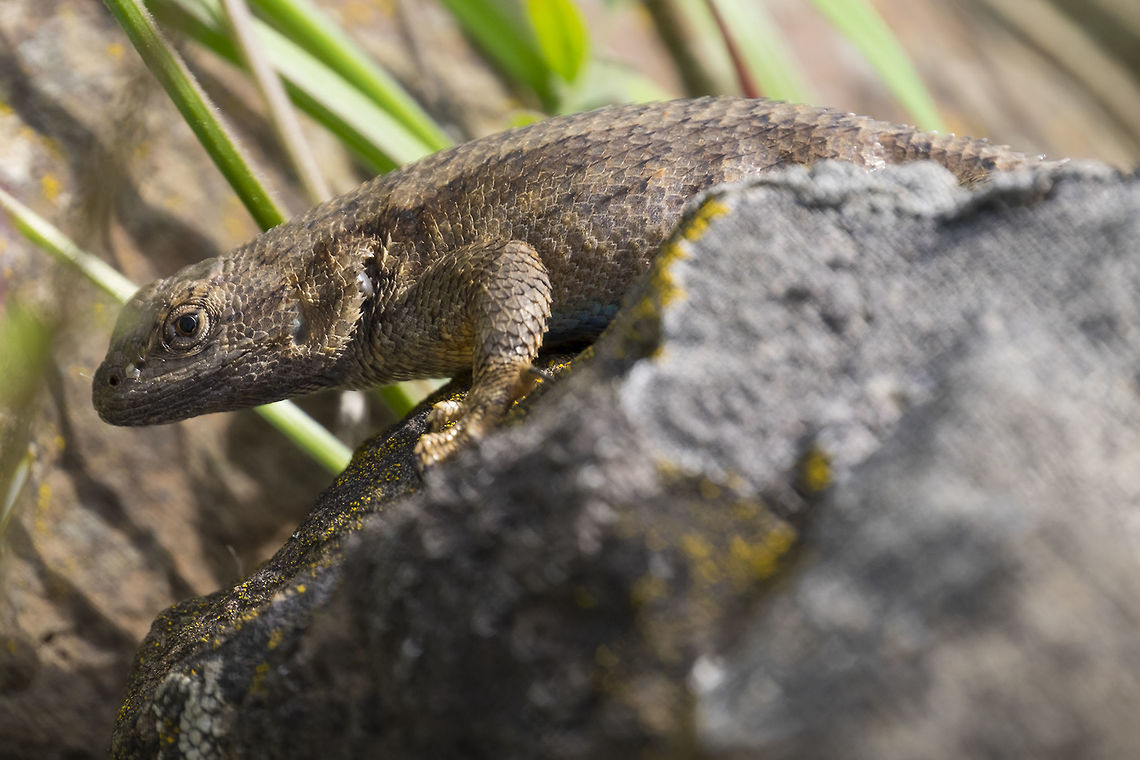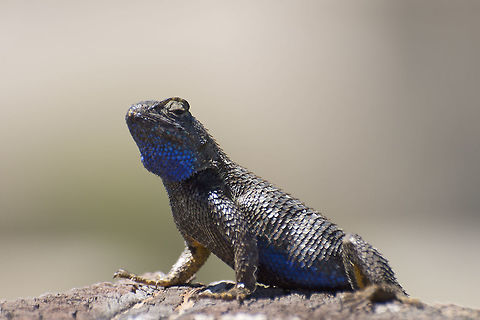
Western fence lizard
if you look close you can see an engorged tick a bit behind his ear - it's been determined that areas that have a lot of lizards have a lower incidence of Lyme disease- a protein in the lizards blood "cleans" the ticks of Lyme pathogen. The downside though.. there are more ticks when there are more lizards (the preferred food for young ticks) for them to feed on... so science is still on the fence (ha-ha) about whether it is good or bad to have a lot of these lizards around.

The western fence lizard is a common lizard of Arizona, California, Idaho, Nevada, Oregon, Utah, Washington, Northern Mexico, and the surrounding area. As the ventral abdomen of an adult is characteristically blue, it is also known as the blue-belly.
